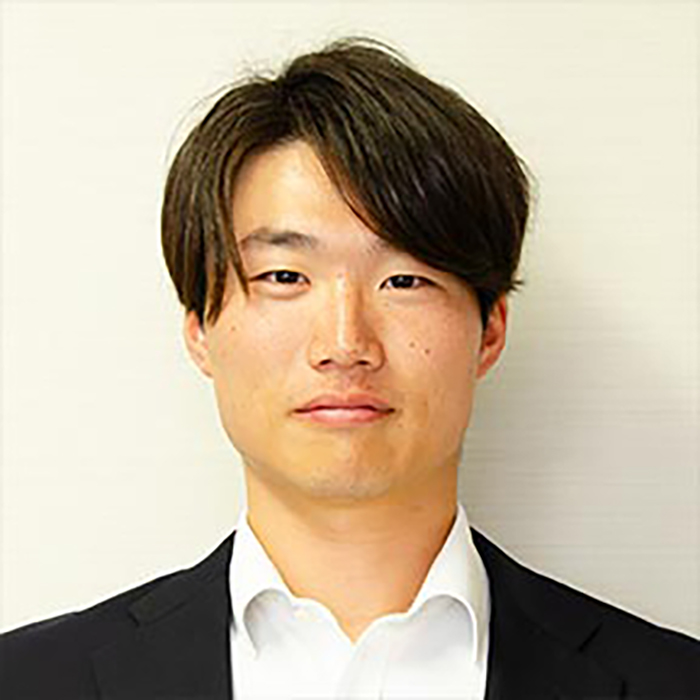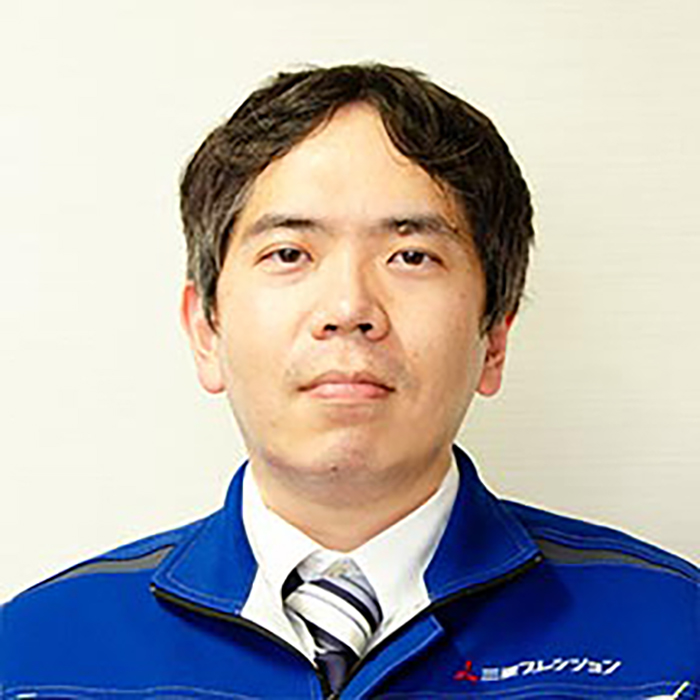2025.09.18

70% of the domestic market share!
Mitsubishi Precision’s train simulation system
automatically identifies and evaluates the driver's point of focus

Railway operators use simulation systems to educate and train their drivers and conductors. Mitsubishi Precision is a leading manufacturer of these systems, with a 70% share of the domestic market (on a unit basis).
Mitsubishi Precision has been in the simulator business since its foundation in 1962, starting with flight simulators for the Japan Air Self-Defense Force and building up to the wide range of simulators it currently develops and offers. The company began producing train simulation systems in the 1960s, starting with electric locomotive trainers for the former Japanese National Railways. Currently, many railway operators, including JR companies, have introduced simulators designed for various training purposes.
A joint research project with the Railway Technical Research Institute led to a unique eye-tracking system with sensors
The company’s strength lies in its knowledge and experience, which enables it to generate highly realistic simulations. Only Mitsubishi Precision can provide a unique function to incorporate footage from train lines supplied by railway operators—our customers—into a simulator to run mock trains.

A train simulator
“In the majority of simulators, a trainee runs a virtual train that displays computer graphic images or real-life footage taken by simulator companies, and they operate the brakes and mas con (short for a master controller, the device used to accelerate or decelerate trains). Our simulators can incorporate both computer graphics created by us and real-life footage taken by us. In addition, our simulators have the function to run mock trains by incorporating real-life footage taken by users into them. This is a unique function exclusive to our company,” explains Hayata Tsukuda, who works in Train Simulation Section of the Solution Business Dpt.
As the company incorporates recordings of the railroad provided by railway operators, it can quickly prepare simulation videos for training. This allows the simulators to stay up to date with changes to the positions of signals and signs due to track renovations or other factors.
Mitsubishi Precision has more unique technologies, such as its Driver Training Review Support System and Eye-tracking System. The former, derived from joint research with the Railway Technical Research Institute, records the maneuvering of the brake and mas con, as well as the speed of the emergency response to an abnormal event. The latter utilizes eye-tracking sensors to automatically recognize and evaluate the driver's point of focus. Both systems raise training efficiency and effectiveness, enabling quantitative evaluations based on numerical data and graphs. It also results in easier comparisons between training results and greater consistency in instructor assessments.
In particular, the Eye-tracking System is the company’s latest technology. “Simply installing sensors only tells us where the driver is looking on the simulator screen,” Mr. Tsukuda tells us. “We developed and installed a system that can distinguish where the driver is looking and for how long. It allows us to determine how many times and for how long the driver looked at traffic signals or signs and the percentage of time spent looking at traffic signals or signs while driving.” Drivers are required to maintain forward attention as a rule. By training with a simulator, each driver can become aware of their eye movement patterns, such as focusing too much on instruments, and use this opportunity to develop countermeasures.
More operators introduce the Driver Training Review Support System and the Eye-Tracking System
The systems are being used to train drivers-in-training at JR West Japan

Driver Training Review Support System and Eye-Tracking System
Many railway operators have already introduced the new systems and are enjoying their merits. One such company is West Japan Railway Company (JR West), which implemented the systems in 2019 by modifying its existing simulators. In addition to emergency response training, the systems allow for adjusting training conditions, including vehicle type, double-track or single-track lines, block system, safety device type, and one-person or two-person operation.
JR West primarily uses simulators in its courses for drivers-in-training and in emergency response training for drivers. In the former case, the features help instructors improve the effectiveness of the training by identifying bad habits of the trainees, including showing them that they might not have paid sufficient attention to the correct objects, as they tend to focus too much on instruments. The latter is used to provide feedback on the results of emergency response training, which all drivers are required to undergo annually. It improves the review process by allowing an objective assessment of the driver’s ability to respond to accident scenarios appropriately, as well as how they responded. Additionally, the training results are shared with other drivers, providing opportunities for mutual learning and improvement.
JR West has installed local-line simulators at 42 crew bases (work locations). The simulators are equipped with the Driver Training Review Support System and Eye-tracking System, so that drivers can train when they are not on the actual train. The company’s employee training center in Suita City, Osaka Prefecture, features various simulators that help to prepare employees to earn a locomotive operator’s license. They include a mock-up train model that allows drivers and conductors to practice together. These simulators also feature the Driver Training Review Support System to provide a step toward obtaining a license.
The driver’s line of sight is used to quickly detect abnormal events. Two patents were filed from joint research with Tokushima University and the University of Electro-Communications.
Currently, Mitsubishi Precision is undertaking further research and development to enhance the training effectiveness of its simulators. In addition to honing the skills of drivers to respond to abnormal occurrences through simulator training, the company aims to develop practical training that enhances trainees’ abilities to quickly identify abnormal situations. This involves studying drivers’ line of sight to improve training functions in collaboration with Tokushima University and the University of Electro-Communications. Mr. Ryo Murakami, who leads the joint research initiative in the Train Simulation Systems Section, Civil Simulation Systems Dpt., explains how this research started:

One result of joint research is a support function that speeds up the detection of abnormal events in the vicinity of railroad tracks. The white circle shows the driver’s point of focus, and the blue color shows the surrounding blocks (search range). The display automatically adjusts to match eye movement so that drivers can learn to balance their attention between the forward view and their surroundings.
“Our joint research started when we explored how to improve trainee evaluations by applying eye-tracking technology to train simulators. The new research initially involved an automobile simulation system which has already been commercialized. Moving forward from there, we are now working with the universities to develop a system for train simulators.”
Tokushima University is leading the current joint research, and the findings have been presented at the Japanese Society for Information and Systems in Education as well as at an international conference held in June. To date, two patent applications have resulted from the joint research.
The new technology that resulted from the joint research will be integrated as new features into the existing Eye-tracking System. In addition to marketing it as an added feature for railway operators that have not yet incorporated the Eye-tracking System, the company also plans to promote it to operators such as JR West, which already have the Eye-tracking System in place.
“The core purpose of introducing a train simulator is to improve the skills of train drivers and reduce accidents,” Mr. Tsukuda says. “As such, we expect a wide range of operators to incorporate the new feature when we illustrate the effectiveness of this new technology. We will offer simulators that meet our customers’ unique training needs based on their requests.”
One of the factors that ensure safe, on-schedule operation of railways is excellent driver skills acquired through regular, frequent training. Our simulators play a significant role in training drivers, allowing them to experience virtual scenarios for various situations without requiring them to operate actual train cars. As such, the expectations for Mitsubishi Precision remain high.
INTERVIEWEES

Hayata Tsukuda
Train Simulation Section, Solution Business Dpt.,
Simulation Systems Division, Sales Headquarters

Ryo Murakami
Train Simulation Systems Section, Civil Simulation Systems Dpt.,
Simulation Systems Division, Kamakura Operations
Mitsubishi Precision Co., Ltd.
8F, Shibaura Crystal Shinagawa
1-6-41 Konan, Minato-ku, Tokyo
Founded in 1962 as a designer and manufacturer of flight simulators and navigation equipment, the company now focuses on three core businesses: simulation systems, navigation and space devices, and parking systems. It contributes to creating a safe, secure, and comfortable future by upgrading social infrastructure.
